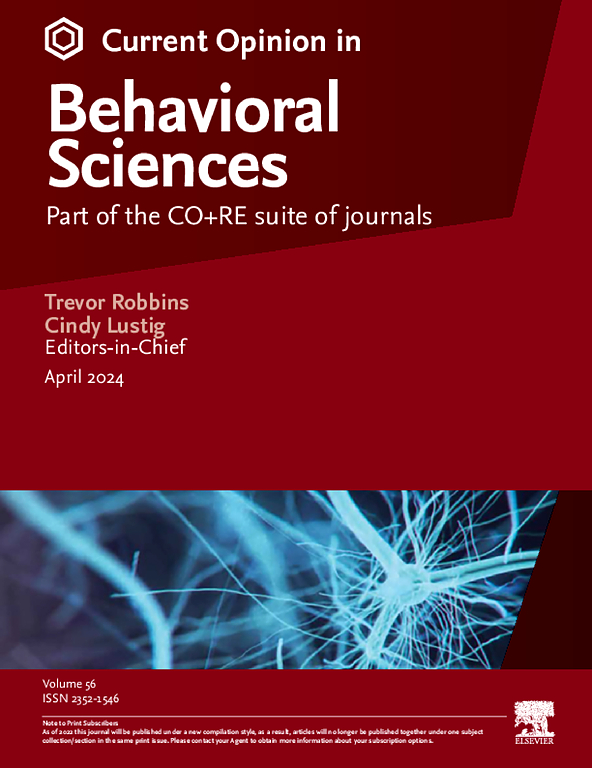睡眠中的默认模式网络:记忆巩固中的纺锤波振荡和长期皮层相互作用
IF 3.5
2区 心理学
Q1 BEHAVIORAL SCIENCES
引用次数: 0
摘要
实验证据越来越支持皮层功能的分布特性。在多个物种中,皮层区域之间相互作用的动力学已经用各种技术进行了研究,这些技术涵盖了空间和时间尺度,从大脑区域的神经集合活动的细节到跨越整个大脑的功能网络的表征。海马与新皮层之间的相互作用作为支持记忆巩固和记忆系统之间信息交换的基本原则而受到关注,这是当代记忆理论的基本原则。最近,研究的重点已经从海马体和一个特定皮质区域之间的交换转移到跨越大面积皮质的皮质-海马体网络的表征上。我们回顾了默认模式网络与海马的显著参与及其在记忆巩固中的作用的证据。然后,我们观察睡眠和清醒时皮层激活的统计数据,讨论它们在多大程度上支持大脑在接近临界状态下运作的假设,这将对信息在遥远区域的传播产生深远的影响。最后,我们将这些文献与大脑振荡的数据联系起来,假设接近临界的皮层激活形成睡眠纺锤波,组织有利于记忆巩固的活动。本文章由计算机程序翻译,如有差异,请以英文原文为准。
The default mode network during sleep: spindle oscillations and long-range cortical interactions in memory consolidation
The distributed nature of cortical function is becoming increasingly supported by experimental evidence. The dynamics of the interaction between cortical areas has been studied in multiple species with a variety of techniques covering spatial and temporal scales, going from the details of neural ensemble activity in a brain area to the characterization of functional networks spanning the entire brain. The interaction between the hippocampus and the neocortex has attracted much attention as supporting memory consolidation and information exchange between memory systems, a basic tenet of contemporary memory theory. Recently, the emphasis has shifted from the study of the exchanges between the hippocampus and one select cortical area to characterization of cortico–hippocampal networks spanning large cortical swaths. We review evidence on the prominent involvement of the default mode network with the hippocampus and its role in memory consolidation. We then look at the statistics of cortical activations in sleep and wakefulness, discussing to what extent they support the hypothesis that the brain operates in a near-critical state, which would have profound consequences on the propagation of information across distant areas. Last, we link that body of literature to data on brain oscillations, hypothesizing that near-critical cortical activations shape sleep spindles, organizing activity conducive to memory consolidation.
求助全文
通过发布文献求助,成功后即可免费获取论文全文。
去求助
来源期刊

Current Opinion in Behavioral Sciences
Neuroscience-Cognitive Neuroscience
CiteScore
10.90
自引率
2.00%
发文量
135
期刊介绍:
Current Opinion in Behavioral Sciences is a systematic, integrative review journal that provides a unique and educational platform for updates on the expanding volume of information published in the field of behavioral sciences.
 求助内容:
求助内容: 应助结果提醒方式:
应助结果提醒方式:


